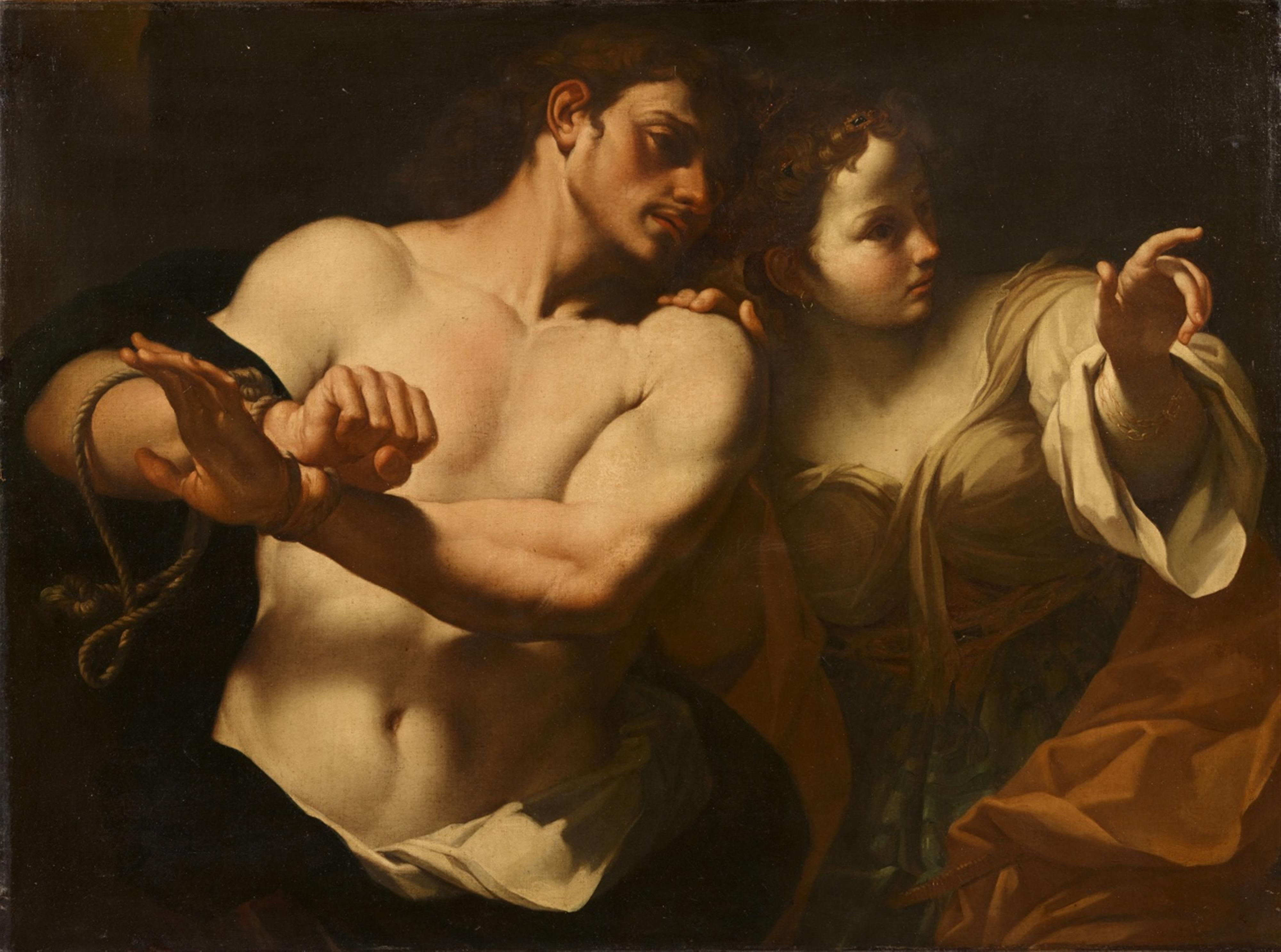Carlo Cignani
Samson breaking the Ropes as Delilah Draws His Attention to the Philistines
Oil on canvas (relined). 94 x 127.5 cm.
The story of Samson and Delilah (Book of Judges, XVI) is a popular biblical tale that has been depicted by numerous artists, especially of the Baroque period. The indomitable Samson, blessed with superhuman strength, falls in love with Delilah. She, however, is convinced by the Philistines to tell them the source of Samson's strength. Samson reveals to her that his strength derives from his long hair, and that he would become as weak as any other human if it were cut off. Delilah allows the Philistines to cut off Samson's hair whilst he sleeps, robbing him of his strength so they can blind and defeat him.
Artists such as Rubens and Rembrandt depicted the dramatic moment in which the Philistines cut off Samson's hair or blind him. Carlo Cignani chooses a preceding scene that is rarely depicted: Samson at first does not tell Delilah the true source of his strength when she asks him. He tells her, for example, that he has to be tied up with nine ropes to lose his strength. But every time the Philistines attack him, believing that Samson is weakened, he frees himself and defeats them - until he reveals the true reason for his strength to Delilah when she asks him the fourth time.
Carlo Cignani depicts the scene in which Delilah points out the attacking Philistines and Samson tears the ropes with a powerful gesture. As in other works by Cignani, the composition focuses on the two protagonists, heightening the drama of the scene. The youthful, elegant figure of Samson betrays the influence of Guido Reni, the composition is informed by the classicism of Bolognese Baroque, of which Carlo Cignani was the last great representative.
We would like to thank Dr Milena Naldi for confirming the attribution of this painting to Carlo Cignani.
Provenance
Auctioned by Koller, Zurich, 15.5.1981, lot 5007. - South German private collection.

